Moroccan town of Taliouine is the place to get the world’s most expensive spice!
Taliouine, the heart of Morocco’s saffron-producing region, lies south of Marrakesh, and east of Taroudant. The city itself is small – just under 6,000 people – but produces more saffron than any other place in Africa. Every November, a festival is held at harvest time and people from around the world come to watch and celebrate. Taliouine is a small village in the heart of the Sirwa, a mountain range known for its dramatic changes in weather conditions. 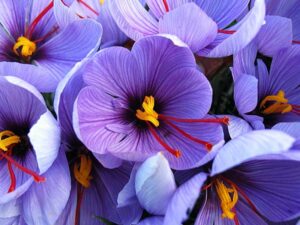 Encompassing vast, rocky valleys that stretch as far as the eye can see, the region seems uninhabitable. Infrastructure is limited; basic amenities like hospitals and schools do not reach surrounding villages.
Encompassing vast, rocky valleys that stretch as far as the eye can see, the region seems uninhabitable. Infrastructure is limited; basic amenities like hospitals and schools do not reach surrounding villages.
Saffron is one of Morocco’s leading exports. Although it’s grown in only a few regions throughout the small North African kingdom. It’s sold in the various spice markets throughout. Taliouine, a little mountain village in the south of Morocco, and the Ourika Valley at the foot of the Atlas Mountains near Marrakech are two well-known regions where the saffron crocuses grow. With purple crocuses lining the fields in Tnine Ourika at the foot of the Atlas Mountains, this labor-intensive process is a sight to behold! The region’s high altitude (1586m), distinct weather patterns, and high mineral content allow for an especially prosperous window in the agricultural calendar: the saffron harvest. Worth its weight in gold, saffron is the most expensive spice in the world. Morocco is the fourth largest producer in the world and while saffron is also farmed in the Ourika Valley, over 90% of its cultivation occurs in the Taliouine region. As a result, the town’s relationship with saffron is built on a dependency and respect for the fortune it brings. Guesthouses and restaurants are all named after the crocus and it is reflected in the local cuisine and traditional medicines. Almost everything from Moroccan salads to kefta and tajines are sprinkled with a healthy dose of saffron stigmas, as if it were salt and pepper, while saffron tea is continually being brewed.
The Farmers Behind the Saffron
The farmers begin their day at around 5 a.m. and spend two to three hours picking the closed flowers before the sun has risen. This procedure helps to protect the delicate stigmas inside the saffron crocuses. Each day brings a new crop and the farmers pick around two baskets full of flowers every morning during the harvest. The labor can be difficult, especially during bad weather. The early mornings and high altitude mean the farmers are often working in relatively dark, cold, and muddy conditions. During the months of October and November, a farmer can expect 15-20 days of harvesting. 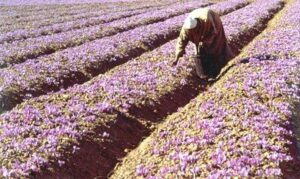 After the flowers have been culled, the land is weeded and the fields are readied for the winter wheat and barley planting. The farmers survive off of the saffron harvest for the remainder of the year, and the bulbs will be ready to plant again in July.
After the flowers have been culled, the land is weeded and the fields are readied for the winter wheat and barley planting. The farmers survive off of the saffron harvest for the remainder of the year, and the bulbs will be ready to plant again in July.
To pick one kilogram of undried saffron, it takes 400 hours and 160,000 flowers.” Once it’s dried, that kilo is reduced to a ready-to-sell 200 grams. Hence, saffron is the most expensive spice in the world—US$7-10 per gram isn’t unusual in North America and Europe for top-quality.
Saffron is one of Morocco’s leading exports. Although it’s grown in only a few regions throughout the small North African kingdom, it’s sold in the various spice markets throughout. Taliouine, a little mountain village in the south of Morocco, and the Ourika Valley at the foot of the Atlas Mountains near Marrakech are two well-known regions where the saffron crocuses grow. With purple crocuses lining the fields in Tnine Ourika at the foot of the Atlas Mountains, this labor-intensive process is a sight to behold!
Typically lasting three weeks in late October or early November, women gather ea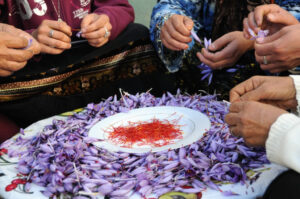 rly in the morning to complete the day’s harvest before the sunlight hits and the flowers begin to bloom. This protects the stigma – which provides the saffron thread – from any dust entering along with the light, which may result in damaging the fragile flower. And it all kicks off around 4 am and finishes by about 9 am.
rly in the morning to complete the day’s harvest before the sunlight hits and the flowers begin to bloom. This protects the stigma – which provides the saffron thread – from any dust entering along with the light, which may result in damaging the fragile flower. And it all kicks off around 4 am and finishes by about 9 am.
Once picked, the separation process begins. The women gather daily for the duration of the harvest, collecting flowers and then gathering around the table to collect the stigma to separate the red stigma from the purple crocus flower – a true sight for the eyes! They gather around small wooden tables, all while sharing a few laughs and enjoying social time.
Then once they’ve completed the separation process, the drying process can begin immediately.
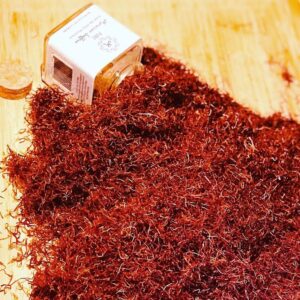 Given the endless blue skies in Morocco, this stigma may be sun-dried, however, this results in a heavier product when purchasing by weight, as the product does not lose much of its natural weight. Drying the product by machine ensures the saffron does not come into contact with dust and therefore significantly reduces the product’s weight. The process, however, is heavily dependent on the weather. A sudden cold snap can significantly reduce the amount of saffron collected and available for sale, thus increasing the process accordingly.
Given the endless blue skies in Morocco, this stigma may be sun-dried, however, this results in a heavier product when purchasing by weight, as the product does not lose much of its natural weight. Drying the product by machine ensures the saffron does not come into contact with dust and therefore significantly reduces the product’s weight. The process, however, is heavily dependent on the weather. A sudden cold snap can significantly reduce the amount of saffron collected and available for sale, thus increasing the process accordingly.
Once dry, the product is stored in airtight jars in a cool place until it is ready for sale. 115 stigma are required to produce one gram of saffron, so it’s no wonder the spice is one of the most expensive in the world. But with antiseptic and anti-oxidant properties, anyone who has tasted real saffron will agree it’s worth paying the price.
Saffron is thought to have originated in either Greece or Persia (Iran, which now accounts for 90 percent of production), but is also cultivated in countries around the Mediterranean, including Morocco.
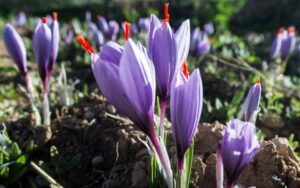 “The seldom-touristed town of Taliouine is the capital of Moroccan saffron, and it’s generally recognized as one of the best varieties of saffron in the world…making this a must-stop destination for foodies.”
“The seldom-touristed town of Taliouine is the capital of Moroccan saffron, and it’s generally recognized as one of the best varieties of saffron in the world…making this a must-stop destination for foodies.”
If you want to taste the product while in Taliouine (380 kilometers by road south of Marrakech), that’s easy: “every side-of-the-road café, auberge, and snack-food joint heaps a generous amount of this delicious spice in every tajine—not to mention couscous, sautéd vegetables, beef brochettes, and omelets.”

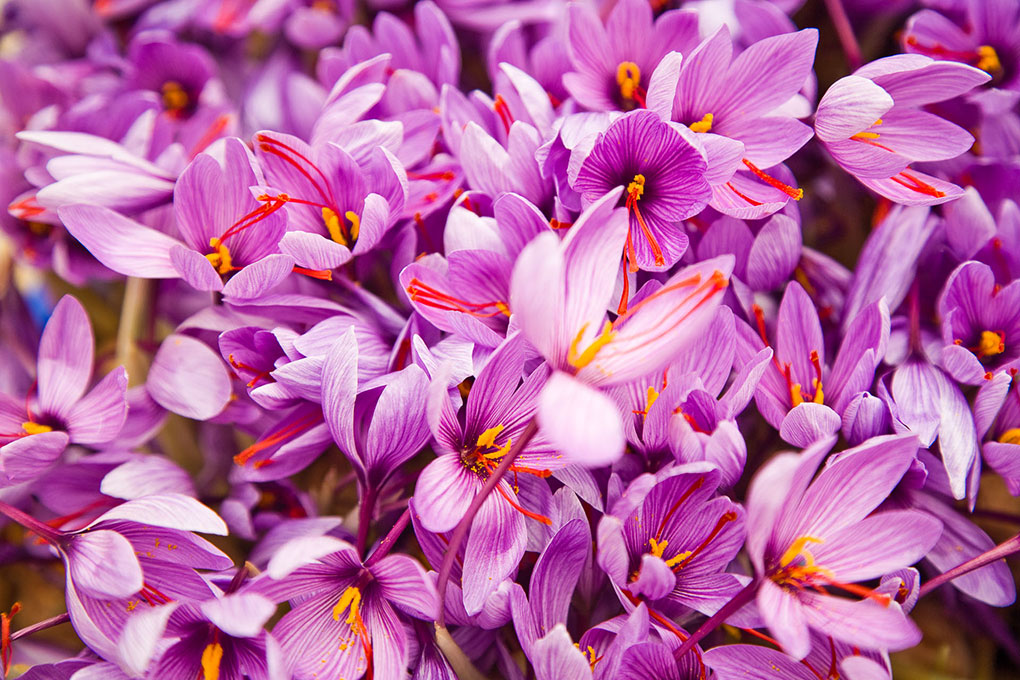
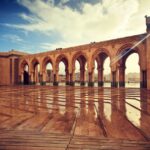

I went over this site and I conceive you have a lot of excellent info, saved to favorites (:.
Thank you! Best Regards, Eleanor